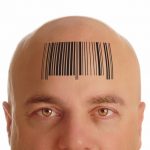 When students say they don’t “test well” or that they “don’t know how to study,” parents and teachers often respond with suggestions — and criticism — to, well, just “study harder.” Great. But what does “study harder” actually mean?
When students say they don’t “test well” or that they “don’t know how to study,” parents and teachers often respond with suggestions — and criticism — to, well, just “study harder.” Great. But what does “study harder” actually mean?
We can see how “studying harder” might actually work if we divide learning into the two distinct parts of:
- Factual Knowledge
- Application of Knowledge
The first is straight memory, while the second requires its application, by which we mean extension through comparison, analysis, evaluation, and so on. Thereby “studying harder” requires development of first, factual knowledge, and, second, using it.
Some tests don’t seem to require factual knowledge and instead are intended to assess what teachers call “skills,” such as interpretation of text, using a given math formula, or analysis of a map. Yet these skill-based tests still assume purely factual prior knowledge, in these cases, vocabulary, multiplication, fractions, and elements of geography.
How do I “study harder”?
Since factual knowledge always lies at the base of any skill or application, parents and teachers who wish to help a student “study harder” might first address the requisite fundamental knowledge of the lesson, a process I call “identifying prior knowledge.” When a student doesn’t know “how to study,” it often means that the student either doesn’t own or doesn’t know how to identify the necessary prior knowledge for the task.
So focus on that first:
- What do you need to know to figure out this problem?
- Can you identify the subject-verb-object in this sentence?
- Have you memorized the formula or chemical element?
- Do you know what that word means?
Asking questions identifies student knowledge and isolates necessary content needed for larger skill development. And since much of factual knowledge requires memorization, “studying harder” thereby means engaging in effective internalization of primary information.
However, what we will see is that effective memorization of factual knowledge is actually application of it, so when we can “study harder” through more effective “memorization,” we are also engaging in skill development and higher order thought.
Factual knowledge is not just memorization
Here’s why: straight memorization is not only very difficult, it requires exceptional intellect that very few of us possess. You may know of someone who can remember names exceptionally or can recite passages from memory. For the rest of us, memorization is not a one-to-one relationship such as:
word <– –> definition
Instead, it is a combination of multiple relationships that assist our memory recall such as,
word <– –> visualization <– –> definition
Our brains are better at doing than storing facts
Our brains are amazingly complex machines that sort through not just words, definitions, and ideas, but relationships between then and their relevancy to our present tense. Just as the path to an old memory is a recent association with it (we commonly speak of “triggering” a memory), factual and skill recall is empowered by thoughts that combine multiple paths to that memory.
For example, we can better remember that the Spanish word “pero” means “dog” if we add to that equation “pero” = (picture of my dog) = “dog”
Or, our knowledge of skiing is more readily applied when we are actually skiing than when we are just thinking about it over the summer. Think also of how, when we hear one story or joke from a friend, we “are reminded” of another one that we haven’t “remembered” in a while. The experience of hearing the joke “triggers” the memory recall.
Why flash cards don’t just work (or why computers don’t “think”)
If we want to memorize a definition, formula or fact , we learn it better in the context of the thing rather than as a straight memory. When I learn that “pero” means “dog” by visualizing my own dog, I have created a larger “context” to “pero” that includes not just “dog” but a particular and important part of my life, my dog.
Sure, I can practice over and over memorizing “pero” = “dog” and through repetition have it down, and flash cards are an excellent tool for that method. But it takes time and dedication as well as special brain power. Most actors or singers don’t just memorize lines through repetition and practice. Instead, they use the “context” of the material to trigger the memorized lines, be it the staged scene and props of the play or the melody and different movements of the song.
It’s innately and powerfully human to learn facts through song, imagery, and context because our brains best operate through the woven fabric of memories, associations and experiences and not via one-to-one recall like a computer, which is why computers don’t — and can’t — actually “think.”
So let’s put the idea of associated memory to work on “studying harder” and see how it can help us remember, recall, and apply the facts a teacher may directly ask for or require as a basis for success on a test or exam:
Five tips for memorization
1. Take and practice notes by hand.
Research shows that people recall more readily hand-written than typed information. It might seem that typing is a complex act that involves multiple brain functions, but writing by hand actually stimulates more brain activity because it is a more fluid and complex process than typing letters from a keyboard.
Additionally, hand-written notes allow for sketching and drawing that provokes visual along with verbal memory.
Sources:
– How Handwriting Trains the Brain, Wall Street Journal
– For More Effective Studying, Take Notes With Pen and Paper, NOVA
2. Make multi-dimensional flash cards
As with handwritten notes, computer-based and typed flashcards are unidimensional and only assist straight memorization. By adding additional connections to a word or concept you will learn it more quickly and effectively than if just flashing back and forth between word/concept and definition. An example would be a flash card made of quarter-folded paper that has:
1) word or concept;
2) a picture, diagram or simple flow chart of it;
3) the definition
4) application (how is it used) and evaluation (why is it used and to what effect).
You might also add comparisons and contrasts (it is like… it is not like…) conditional uses of the idea (“if this… than that”) and simple analysis or evaluations (“it is because of .. it is good for…”)
3. Study and practice in and out of context
Memory recall is more rapid and complete when we are in the “context” or “situation of the original experience. You will likely better remember the lessons of a lab experiment in the lab itself, so when you are studying for a test on the lab, put your mind back into the scene of the lab and see, smell, hold, and relieve the experiment you are studying.
To then test your recall of the lessons, practice it while doing something or somewhere else and see how well you remember it. If you don’t remember it well, rebuild the “context” by visualizing the scene in which you learned it.
Another example would be to memorize a poem by acting it out or feeling the “situation” of the poem so that each line is connected to a specific context (weather, colors, feelings, etc. from the poem)
4. Visualize it, graph it, flow chart using a “Mind Map”
A “mind map” is any visual organization of information. Mind maps are excellent tools for memorization — and application of content and skills.
A quick way to visualize a definition or concept is to start with a blank piece of paper and write it in the middle of the page. Now to the left or above, list the things that “lead to” or are “behind” that definition or concept, and to the right or below list things that “are the result of” or “follow” it.
Using our example of “pero,” we could create a simple mind map such as:
dog –> my dog –>
<–> PERO <–>
–> man’s best friend –> companionship
With this I have created a simple flow chart that helps me connect not just “pero” with “dog” but “pero” with my dog and a meaningful idea about her. I am now more likely to recall the straight definition of “pero” on my Spanish test tomorrow.
5. Repetition
Here I will admit that the parent and teacher advice to “study harder” means just doing more of it.
Sometimes we just have to force ourselves through will power to do something that we want to achieve. Set your goal and work towards it!
Make it work for you!
Students can empower their studies by leveraging the way our brains work through connections, context, experiences, and associations. When we employ those devices we are not only learning a core fact or concept, we are also extending it through doing.
Learn deeper, learn more thoroughly — and ace that next exam!
– Michael
If you want any more help remembering what “pero” means, try thinking of this, the “best pero ever”, Puck:


Thank you
Oh yes, I think practice make everything good and perfect. if any of student want to complete geometry homework without any error, he should start writing it so that he can learn something. I know, it is not so easy but you should do it so that you don’t face issues later.